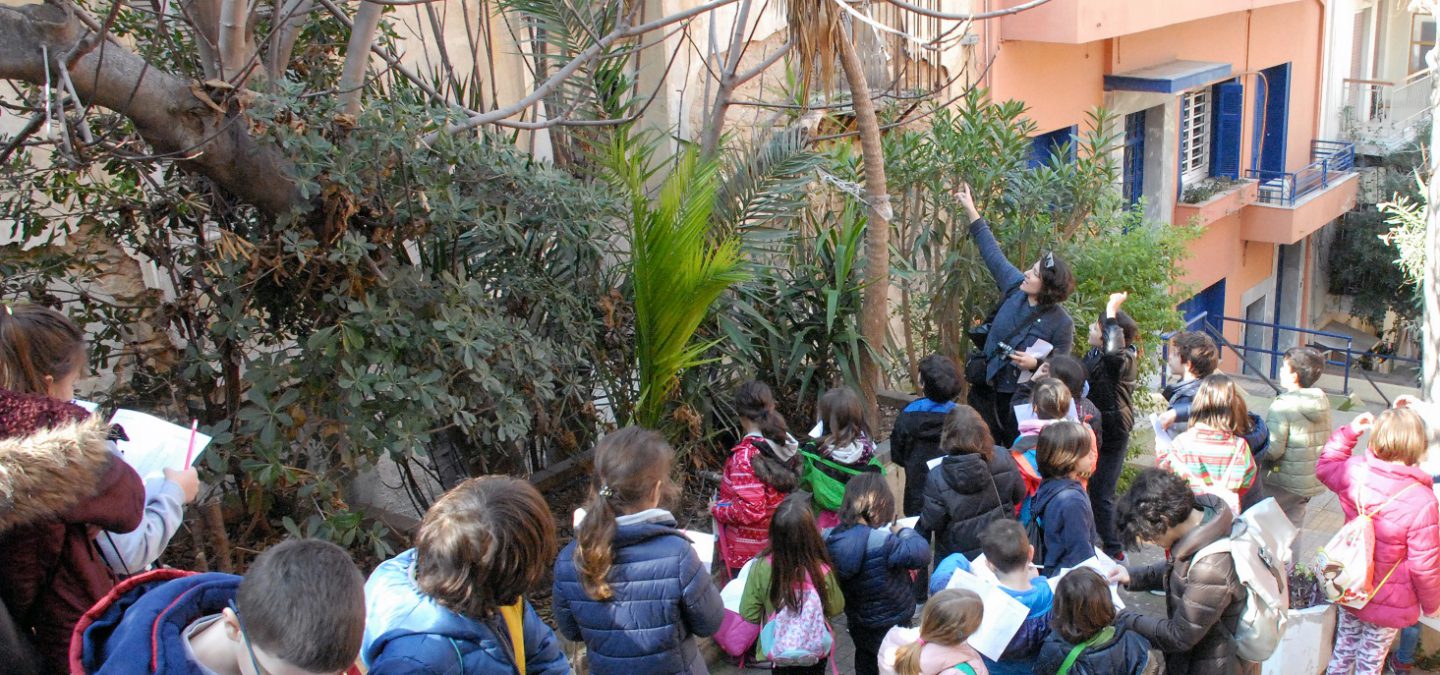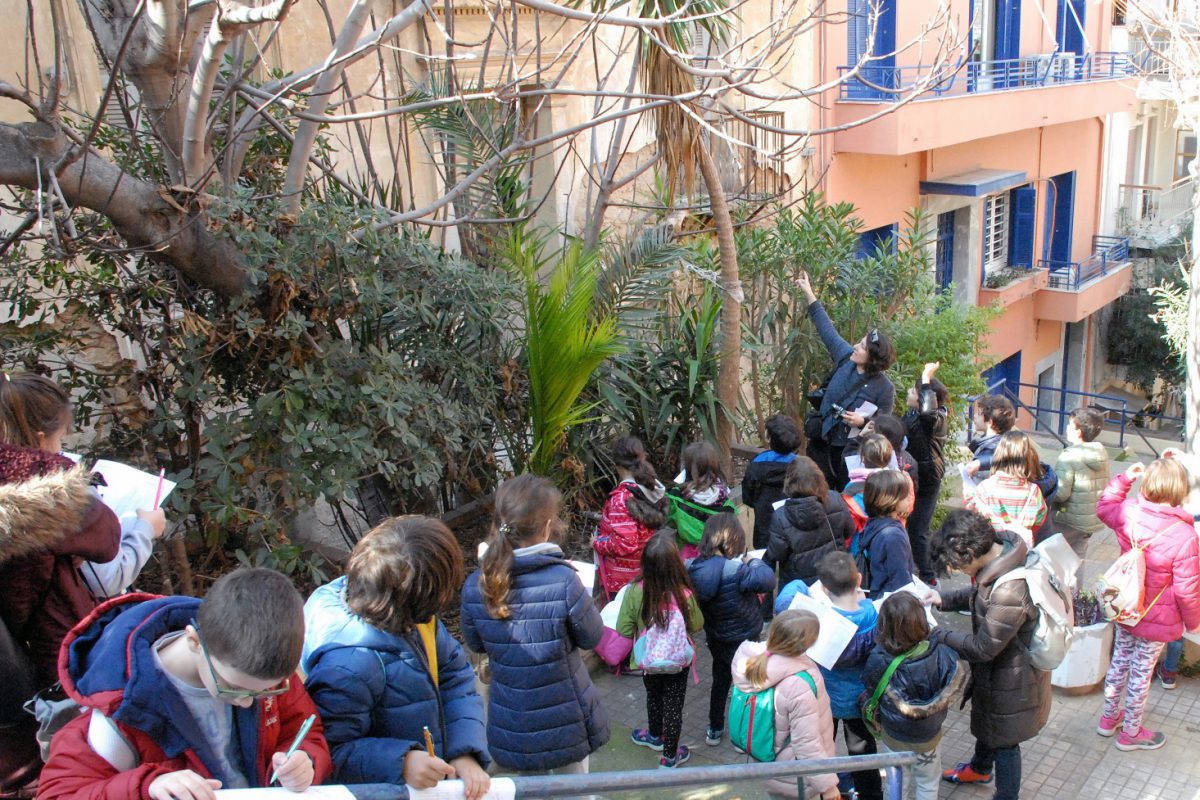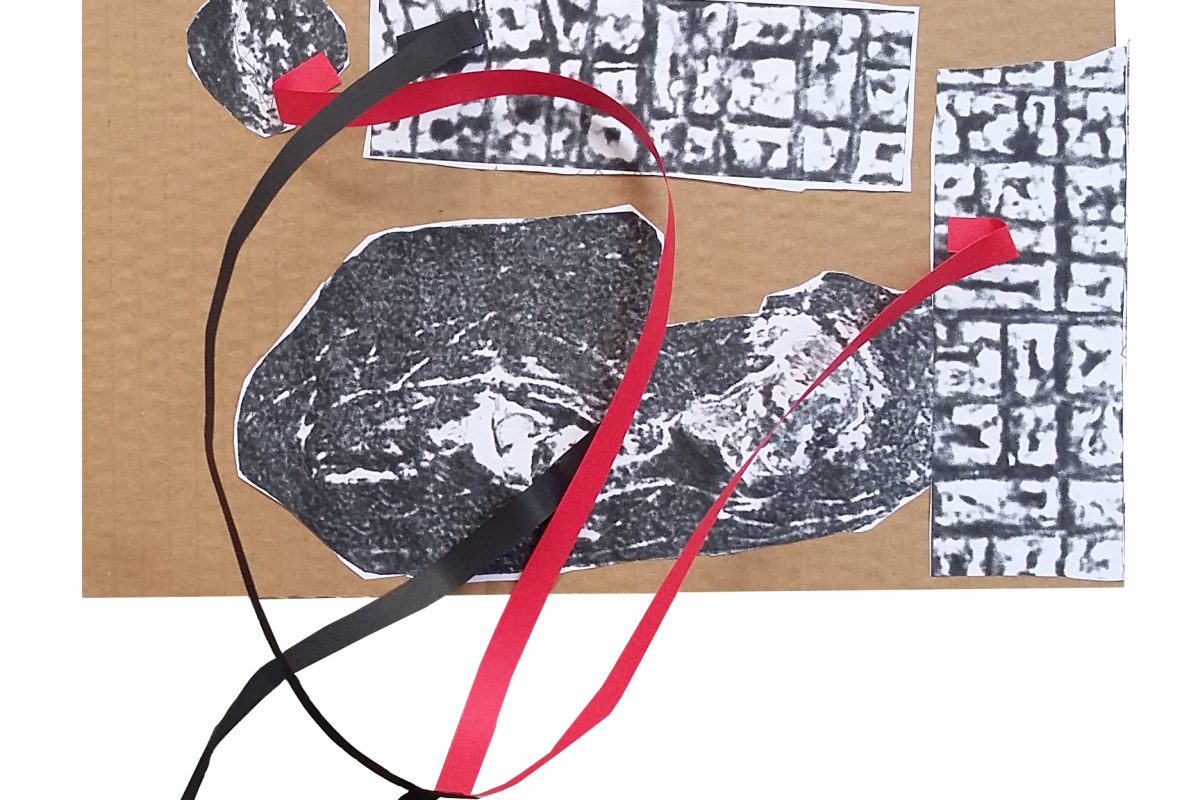
Keep up with our latest news and projects!

Our projects aim to familiarise children with urban space and to engage them in actively participating in the life of the city. Mythological Sections is a project addressed to children in the first grades of elementary school. It was realised in the context of elementary-level Environmental Studies.
The project invites children to look into the world of mythological symbols for a set of codes which will help them to develop their associative thinking, draw connections between different notions, grasp abstractions and transform the symbols into spatial concepts. Through play, children produce subjective readings of a number of myths. The use of myths has a liberating effect, at the same time as offering a set of friendly tools by which to process all that makes up their experience of the city.
Conversely, the project is a starting point for observing the city and taking it in its completeness. It helps transcend the sense of fragmentation imposed upon experience by the kind of rampant urban sprawl that is taking over the Attica Basin without so much as a single child-friendly network in place.
The project focuses on the historic centre of the city of Athens and its environs, a place that is particularly inhospitable to children, yet at the same time being rich in historical references and meanings. Greek mythology provides an organising framework, a tool by which to understand concepts and draw connections between them. Ancient Greek myth, whose openness to diverse interpretations and variations can be traced back to its origins, takes on a different significance in the city’s here and now.
A1. The Gods: Children familiarise themselves with abstract concepts through games of symbolism: the Gods become associated with everyday objects, urban living, architectural materials and spatial relations.
A2. The terrain and its map: Children are invited to ‘read’ the map of Athens using Greek mythology as a ‘tool’. The Gods find their place on that map based on their particular qualities and the elements/ principles that they represent.
B1. The field trip: The climb up to Mount Lycabettus is a climactic point in the process, as children experience the vertiginous feeling that accompanies a bird’s-eye view of the city’s terrain. With the city stretching out beneath, the children make observations. They analyse and comment on the vista opening up before them.
This is how the particular area of intervention is marked up: this year’s edition of the project focused on Isavron Street in the area of Neapolis, Exarcheia, a road on the axis connecting Mount Lycabettus with a smaller hill, Strefi (approximately a 450m distance). Having identified the axis in question from their vantage point on Mount Lycabettus, the children then climbed back down to the level of the city and walked along Isavron St. until the boundary of the non-pedestrianised section interrupted their course. So, how can the hill on the other side be reached?
B2. Spatial representation on the urban scale: The issue to be resolved, as identified by the group of participants (children and architects/educators), is how to design and establish a child- friendly route connecting the two hills. What elements are we to use in developing this proposal?
1. Plinths: How would the ancient Gods go about transforming these, based on their own distinctive qualities? Mythology becomes a lens through which children are inspired to picture new uses for abandoned buildings while coming up with ideas on how to remedy the dysfunctionality of contemporary facades. Plinths transform into pastry and bakery shops, dinosaur museums, vertical playgrounds or sheltered gardens as extensions of the new overflown by nature route. Children transcend the boundaries between inside and outside, private and public. Plinths and the street merge into a place where everyday life interaction takes place.
 The climb back down to the level of the city along Isavron St.
The climb back down to the level of the city along Isavron St.
2. Children get to work trying to figure out how to connect the two hills. They do so by taking abstract concepts and turning them into spatial elements with the help of the different qualities associated with each of the gods or goddesses. For example, a bridge would correspond to the goddess Athena, the use of urban tree planting to Demeter, the element of water to Poseidon, animals to Artemis, cableways to Hermes and so on.
Children then work out these ideas in the form of collages and scale models. These are tools wherein the notion of error is inconsequential and as such grant their users absolute freedom of self-expression.
 One of the childrens collages, a tool wherein the notion of error is inconsequential and as such grant their users absolute freedom of self-expression.
One of the childrens collages, a tool wherein the notion of error is inconsequential and as such grant their users absolute freedom of self-expression.
Children observe their city from above, from different heights and angles, in a game of scale shifts which allows them to form a holistic and abstracted view of it. They can now perceive the Athenian terrain, the continuities and discontinuities of the landscape and its natural features (rivers and streams that have been forced underground and now appear as discontinuous routes of green, hills, etc); they can identify its landmarks (monuments and churches, old building complexes, etc), form an idea of the city’s relationship to the mountains and sea, and learn to orientate themselves on the basis of this information.
Walking down to the level of the city to experience it first hand, one realises that children’s eyes are used to viewing the inhospitable character of the urban landscape as something of a normality. In the course of the project, though, there is a gradual shift in their perspective. In their hands, Isavron St ceases to be a road taken over entirely by cars and becomes an axis along which people, animals and water move freely, and where green space also seems to enjoy some sort of fluidity, as boundaries between nature and the built environment are blurred and uses tend to favour play and interaction. By directly experiencing and thinking about urban space, children become aware of their right to a sustainable and friendly city. At the same time, they are awakened to their responsibility as citizens to critically pursue changes in their environment and everyday life.
This article belongs to a series of stories about the city at eye level for kids! You can access the full book online in PDF or pre-order your hardcopy to be delivered to your home.
Get your book here